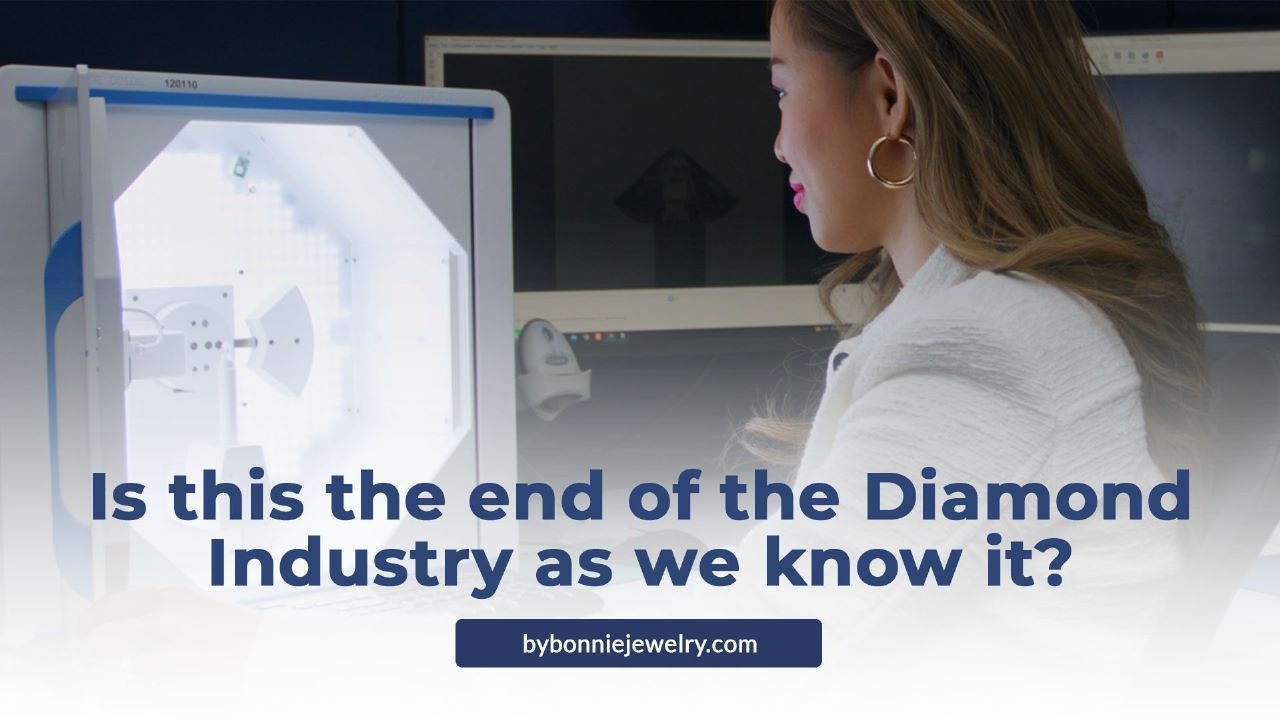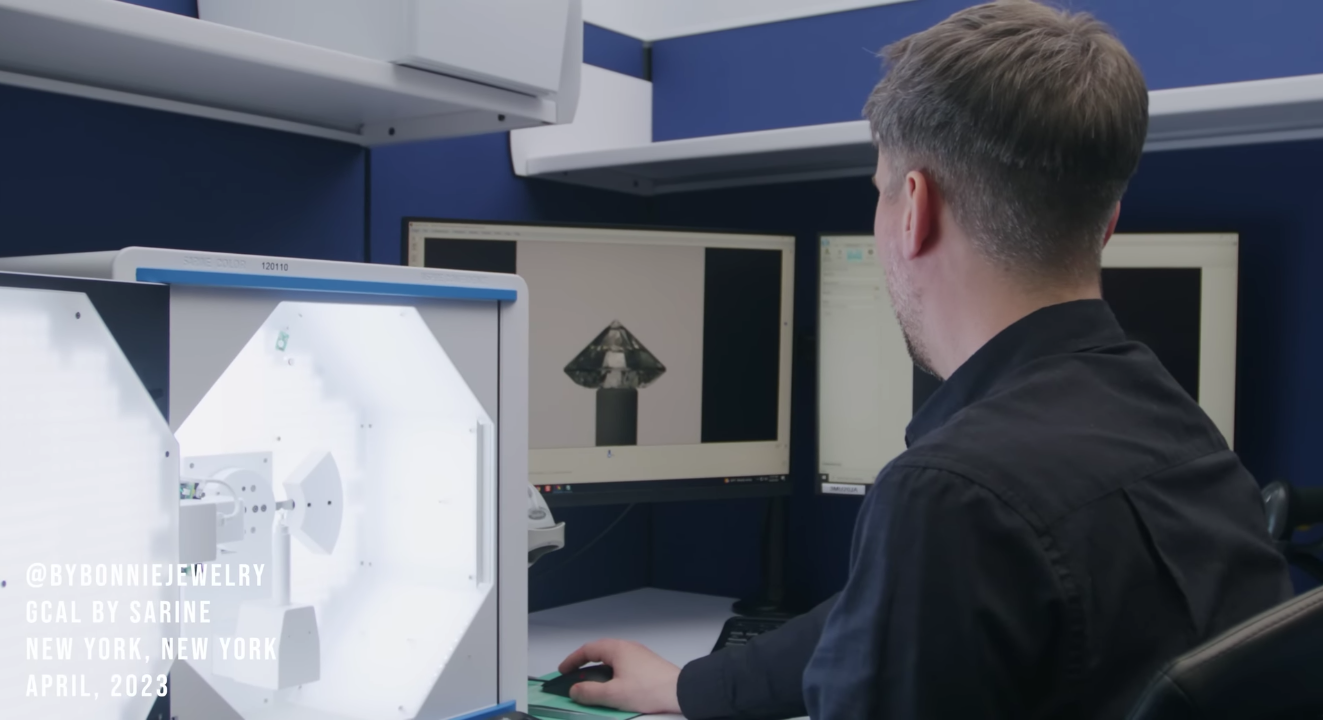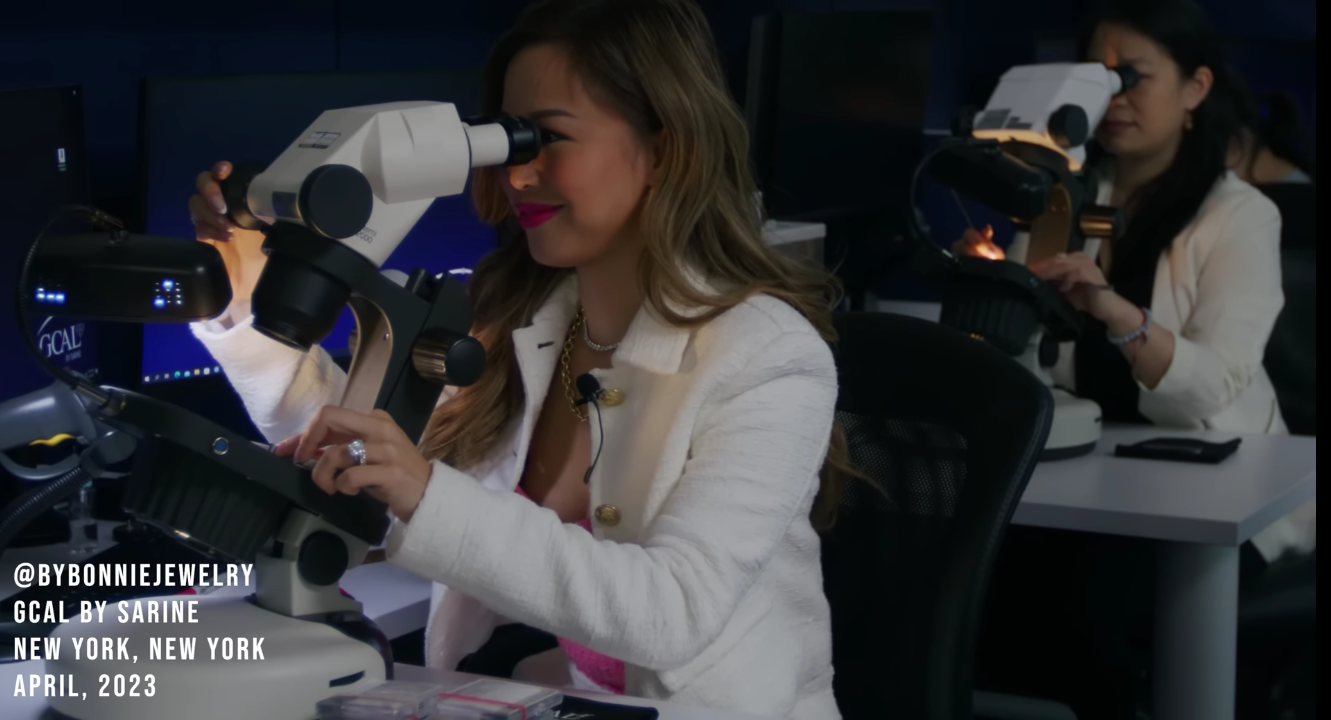Is This The End Of The Diamond Industry As We Know It?

Is This The End Of The Diamond Industry As We Know It?
Is AI ready to end the diamond industry and what changes will this mean for you and me?
Have you ever wondered about the process of grading diamonds? When you purchase a valuable diamond, it comes with a grading report that details its characteristics. Today, we have a unique opportunity to take you inside the GCAL laboratory and provide an exclusive glimpse into how diamonds are graded. From assessing color and cut to evaluating clarity, we'll explore the comprehensive steps involved in this meticulous process.
This behind-the-scenes access allows us to gain a deeper understanding of how these precious gemstones are carefully examined and rated.
Is This THE END of the Diamond Industry As We Know It?
The introduction of lab-grown diamonds has had a significant impact on the diamond industry, potentially signaling a shift in how we perceive and engage with diamonds. Initially, there was skepticism among industry professionals, but as time passed, it became clear that lab-grown diamonds were here to stay and even improving in quality. We (at ByBonnie Jewelry) were fortunate to be invited to witness firsthand the groundbreaking advancements in this field, revealing technology that surpasses our current knowledge.
When it comes to AI, many people have mixed feelings about it. It has made significant strides in various industries, with innovations like ChatGBT generating excitement and possibilities. Its potential influence on the diamond industry cannot be underestimated. Staying informed about these developments is crucial as it could revolutionize how we buy and engage with diamonds, affecting both consumers and jewelers alike.
Recently, there has been a merger between GCAL and Sarine, two influential players in the industry. This collaboration is poised to introduce technology that has the potential to transform the diamond industry. For those unfamiliar, GCAL and Sarine are key entities driving innovation and change in the diamond field.
The emergence of lab-grown diamonds and the advancements in AI technology are shaping the future of the diamond industry. Staying informed about these developments and the merging of influential entities such as GCAL and Sarine is essential as they have the potential to bring about significant changes in how we perceive, purchase, and work with diamonds.
Who is GCAL & Sarine?
GCAL is a laboratory that has emerged as a competitor to the well-known GIA in the diamond grading industry. They have introduced innovative technologies that are reshaping this traditional industry. Sarine, on the other hand, is a technology company that provides machines for analyzing diamonds, including their cut, proportions, and other aspects that are crucial for certification.
Our invitation to explore GCAL's lab came unexpectedly, as they recognized our passion for jewelry and wanted to showcase their proprietary technology. This exclusive opportunity allowed us to witness groundbreaking advancements and meet the minds behind the operation.
We filmed the entire process, from diamond grading to certificate printing, and had in-depth discussions with scientists and experts. SO, stay tuned for insider insights that will transform how we perceive and purchase diamonds in the future. Don't forget to subscribe to our YouTube channel for the latest updates and click here to learn more about our visit at GCAL!
How is this changing the diamond industry?
The diamond industry is undergoing a significant transformation, comparable to how Nokia's dominance in the phone market was overtaken by Apple's iPhone. Currently, diamonds are predominantly certified by GIA, with IGI focusing on lab-grown diamonds. GCAL, a New York-based laboratory, stands out with its highly regarded 8X grading report, offering more detailed assessments than the standard 3X grading. In an upcoming video and blog, we will explore the step-by-step process of diamond grading, including the machines used.
GIA has long been the industry standard, while other labs like EGL faced criticism for loose grading practices. However, GCAL's emergence with its advanced grading system and GemPrint technology, which analyzes the unique DNA of each diamond, has caught attention. The impact of these developments is expected to shake up the industry, much like the introduction of lab-grown diamonds did. As a private jeweler, I work with trusted certification bodies and emphasize the importance of curation, but the upcoming news I'll share has the potential to revolutionize the industry once again.
Are GCAL and Sarine competing with GIA?
GIA currently holds a monopoly in the diamond grading market. However, the merger of GCAL and Sarine represents a different approach. Rather than directly competing with GIA, they are leveraging technology and AI to bring about significant changes in how diamonds are assessed and purchased. This shift has the potential to revolutionize the industry, offering consumers more options, improved services, and greater access to information.
The aim is to protect and empower consumers by providing them with enhanced knowledge and transparency through advanced certification processes. This competition will drive innovation, resulting in better products and services for all. Just as lab-grown diamonds introduced new options and changed the natural diamond industry, this merger aims to bring about similar transformations by advancing technology and offering consumers a broader range of choices.
The focus is on delivering more information and ensuring consumer protection, ultimately reshaping the way diamonds are bought and sold.
A.I. Taking Over The Diamond Industry


The use of artificial intelligence (AI) in diamond grading is a groundbreaking development. With AI technology, diamonds can be quickly and accurately analyzed by comparing them to a vast database of images containing various inclusions, colors, and tints. This enables unbiased and precise grading in seconds.
During my visit to the facility, I witnessed firsthand how the machines utilize AI and machine learning to consistently grade diamonds for color and clarity with high accuracy. This technology has the potential to revolutionize the diamond industry by providing scalable and standardized grading capabilities worldwide.


The opportunity to scale production without compromising quality is a significant advantage. I personally experienced the advancements made in this field, as our entire team was flown to the facility, where we met with the president, scientists, and staff. The impact of this AI technology is expected to be substantial, akin to the influence lab-grown diamonds had on the industry.
Is This The End Of GIA?
The introduction of AI technology through Sarine and GCAL has the potential to bring significant changes to the diamond industry. While GIA currently dominates the market, the advancements made by Sarine's AI technology will have far-reaching effects.
As a vendor, I see a future where this technology will greatly enhance sourcing and understanding of gemstones and diamonds. For consumers, the benefits are numerous. The use of diamond fingerprints and faster grading with AI means faster turnaround times for certifications, leading to quicker access to high-quality and accurately graded products. This development promises improved efficiency, better quality, and increased accuracy throughout the industry.
Stay tuned as I take you through the entire diamond grading process, from the arrival of diamonds at the lab to the final printing machine. And if you have more questions about diamonds or need guidance on choosing the best one, visit our website at bybonniejewelry.com or subscribe to our YouTube channel for more insights and information.








